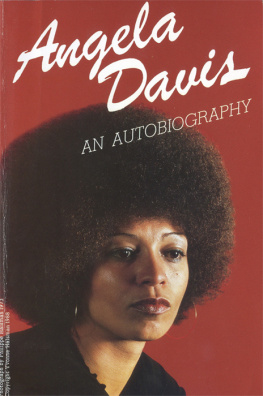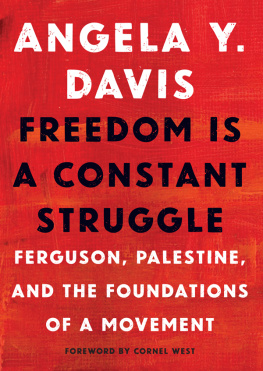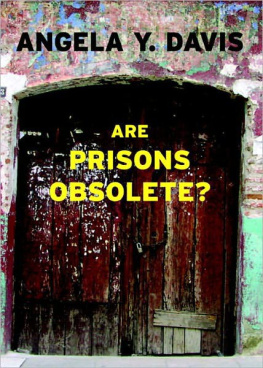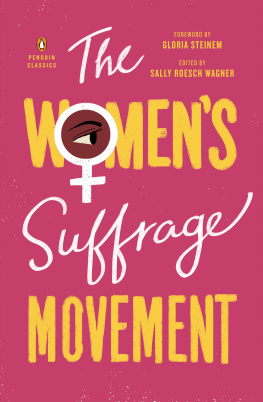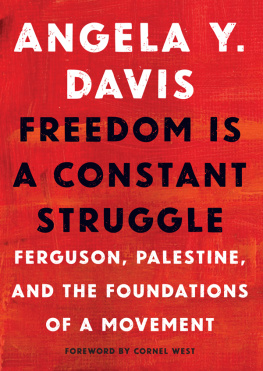Angela Y. Davis - Women, Race, & Class
Here you can read online Angela Y. Davis - Women, Race, & Class full text of the book (entire story) in english for free. Download pdf and epub, get meaning, cover and reviews about this ebook. year: 1983, publisher: Vintage, genre: Home and family. Description of the work, (preface) as well as reviews are available. Best literature library LitArk.com created for fans of good reading and offers a wide selection of genres:
Romance novel
Science fiction
Adventure
Detective
Science
History
Home and family
Prose
Art
Politics
Computer
Non-fiction
Religion
Business
Children
Humor
Choose a favorite category and find really read worthwhile books. Enjoy immersion in the world of imagination, feel the emotions of the characters or learn something new for yourself, make an fascinating discovery.

- Book:Women, Race, & Class
- Author:
- Publisher:Vintage
- Genre:
- Year:1983
- Rating:3 / 5
- Favourites:Add to favourites
- Your mark:
- 60
- 1
- 2
- 3
- 4
- 5
Women, Race, & Class: summary, description and annotation
We offer to read an annotation, description, summary or preface (depends on what the author of the book "Women, Race, & Class" wrote himself). If you haven't found the necessary information about the book — write in the comments, we will try to find it.
Women, Race, & Class — read online for free the complete book (whole text) full work
Below is the text of the book, divided by pages. System saving the place of the last page read, allows you to conveniently read the book "Women, Race, & Class" online for free, without having to search again every time where you left off. Put a bookmark, and you can go to the page where you finished reading at any time.
Font size:
Interval:
Bookmark:
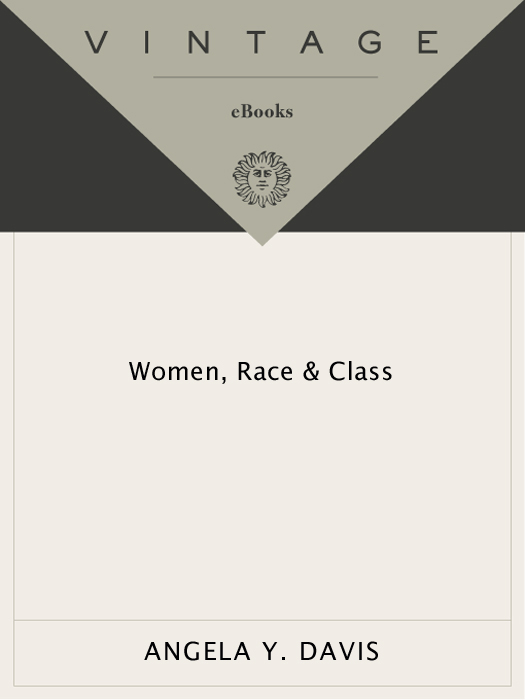
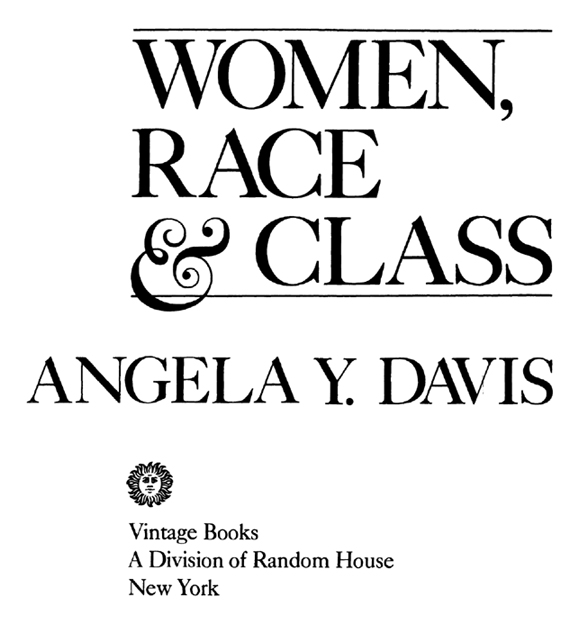
First Vintage Books Edition, February 1983
Copyright 1981 by Angela Y. Davis
All rights reserved under International and Pan-American Copyright Conventions. Published in the United States by Random House, Inc., New York. Originally published by Random House Inc. in 1981.
Library of Congress Cataloging in Publication Data
Davis, Angela Yvonne, 1944
Women, race & class.
Originally published: New York: Random House, 1981.
1. RacismUnited States.
2. United StatesRace relations.
3. SexismUnited States.
4. United StatesEconomic conditions1961
5. Afro-American womenHistory.
I. Title
II. Title: Women, race, and class.
HT 1521.D38 1983 305.42 82-20266
eISBN: 978-0-307-79849-7
v3.1_r1
To my mother,
Sallye B. Davis
I want to thank the following people for their help:
Kendra Alexander; Stephanie Allen; Rosalyn Baxandall;
Hilton Braithwaite; Alva Buxenbaum; Fania Davis; Kipp Harvey; James Jackson; Phillip McGee, Dean of the School of Ethnic Studies, San Francisco State University; Sally McGee; Victoria Mercado; Charlene Mitchell; Toni Morrison;
Eileen Ahearn; the Womens Studies Program of San Francisco State University.
 The Legacy
The Legacyof Slavery: Standards
for a New Womanhood
When the influential scholar Ulrich B. Phillips declared in 1918 that slavery in the Old South had impressed upon African savages and their native-born descendants the glorious stamp of civilization,
During the 1970s the slavery debate reemerged with renewed vigor. Eugene Genovese published Roll, Jordan, Roll: The World the Slaves Made. of us who have anxiously awaited a serious study of the Black woman during slavery remain, so far, disappointed. It has been equally disappointing to discover that with the exception of the traditionally debatable questions of promiscuity versus marriage and forced versus voluntary sex with white men, scant attention has been focused on women by the authors of these new books.
The most enlightening of all these recent studies is Herbert Gutmans investigation of the Black family. In furnishing documentary evidence that the familys vitality proved stronger than the dehumanizing rigors of slavery, Gutman has dethroned the Black Matriarchy thesis popularized by Daniel Moynihan et al. in 1965. Yet, since his observations about slave women are generally designed to confirm their wifely propensities, the implication is easily drawn that they differed from their white counterparts only to the extent that their domestic aspirations were thwarted by the exigencies of the slave system. According to Gutman, although institutionalized slave norms accorded women a great degree of premarital sexual freedom, they eventually settled into permanent marriages and built families based as much on their husbands input as on their own. Gutmans cogent and well-documented arguments against the matriarchy thesis are extremely valuable. But how much more powerful his book might have been had he concretely explored the multidimensional role of Black women within the family and within the slave community as a whole.
If and when a historian sets the record straight on the experiences of enslaved Black women, she (or he) will have performed an inestimable service. It is not for the sake of historical accuracy alone that such a study should be conducted, for lessons can be gleaned from the slave era which will shed light upon Black womens and all womens current battle for emancipation. As a layperson, I can only propose some tentative ideas which might possibly guide a reexamination of the history of Black women during slavery.
The enormous space that work occupies in Black womens lives today follows a pattern established during the very earliest days of slavery. As slaves, compulsory labor overshadowed every other aspect of womens existence. It would seem, therefore, that the starting point for any exploration of Black womens lives under slavery would be an appraisal of their role as workers.
The slave system defined Black people as chattel. Since women, no less than men, were viewed as profitable labor-units, they might as well have been genderless as far as the slaveholders were concerned. In the words of one scholar, the slave woman was first a full-time worker for her owner, and only incidentally a wife, mother and homemaker. Judged by the evolving nineteenth-century ideology of femininity, which emphasized womens roles as nurturing mothers and gentle companions and housekeepers for their husbands, Black women were practically anomalies.
Though Black women enjoyed few of the dubious benefits of the ideology of womanhood, it is sometimes assumed that the typical female slave was a houseservanteither a cook, maid, or mammy for the children in the big house. Uncle Tom and Sambo have always found faithful companions in Aunt Jemima and the Black Mammystereotypes which presume to capture the essence of the Black womans role during slavery. As is so often the case, the reality is actually the diametrical opposite of the myth. Like the majority of slave men, slave women, for the most part, were field workers. While a significant proportion of border-state slaves may have been houseservants, slaves in the Deep Souththe real home of the slaveocracywere predominantly agricultural workers. Around the middle of the nineteenth century, seven out of eight slaves, men and women alike, were field workers
Just as the boys were sent to the fields when they came of age, so too were the girls assigned to work the soil, pick the cotton, cut the cane, harvest the tobacco. An old woman interviewed during the 1930s described her childhood initiation to field work on an Alabama cotton plantation:
We had old ragged huts made out of poles and some of the cracks chinked up with mud and moss and some of them wasnt. We didnt have no good beds, just scaffolds nailed up to the wall out of poles and the old ragged bedding throwed on them. That sure was hard sleeping, but even that felt good to our weary bones after them long hard days work in the field. I tended to the children when I was a little gal and tried to clean house just like Old Miss tells me to. Then as soon as I was ten years old, Old Master, he say, Git this here nigger to that cotton patch.
Jenny Proctors experience was typical. For most girls and women, as for most boys and men, it was hard labor in the fields from sunup to sundown. Where work was concerned, strength and productivity under the threat of the whip outweighed considerations of sex. In this sense, the oppression of women was identical to the oppression of men.
But women suffered in different ways as well, for they were victims of sexual abuse and other barbarous mistreatment that could only be inflicted on women. Expediency governed the slaveholders posture toward female slaves: when it was profitable to exploit them as if they were men, they were regarded, in effect, as genderless, but when they could be exploited, punished and repressed in ways suited only for women, they were locked into their exclusively female roles.
When the abolition of the international slave trade began to threaten the expansion of the young cotton-growing industry, the slaveholding class was forced to rely on natural reproduction as the surest method of replenishing and increasing the domestic slave population. Thus a premium was placed on the slave womans reproductive capacity. During the decades preceding the Civil War, Black women came to be increasingly appraised for their fertility (or for the lack of it): she who was potentially the mother of ten, twelve, fourteen or more became a coveted treasure indeed. This did not mean, however, that as mothers, Black women enjoyed a more respected status than they enjoyed as workers. Ideological exaltation of motherhoodas popular as it was during the nineteenth centurydid not extend to slaves. In fact, in the eyes of the slaveholders, slave women were not mothers at all; they were simply instruments guaranteeing the growth of the slave labor force. They were breedersanimals, whose monetary value could be precisely calculated in terms of their ability to multiply their numbers.
Font size:
Interval:
Bookmark:
Similar books «Women, Race, & Class»
Look at similar books to Women, Race, & Class. We have selected literature similar in name and meaning in the hope of providing readers with more options to find new, interesting, not yet read works.
Discussion, reviews of the book Women, Race, & Class and just readers' own opinions. Leave your comments, write what you think about the work, its meaning or the main characters. Specify what exactly you liked and what you didn't like, and why you think so.

